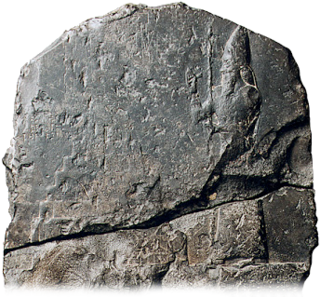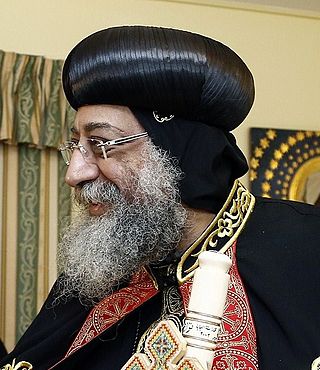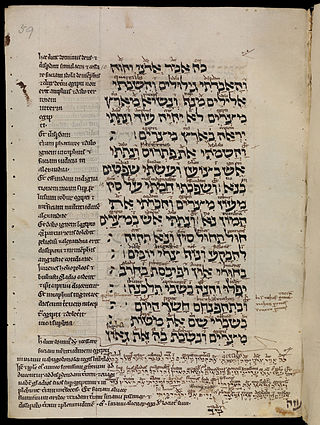
Amasis II or Ahmose II was a pharaoh of the Twenty-sixth Dynasty of Egypt, the successor of Apries at Sais. He was the last great ruler of Egypt before the Persian conquest.

The Coptic Orthodox Church, also known as the Coptic Orthodox Patriarchate of Alexandria, is an Oriental Orthodox Christian church based in Egypt, serving Africa and the Middle East. The head of the church and the See of Alexandria is the Pope of Alexandria on the Holy Apostolic See of Saint Mark, who also carries the title of Father of fathers, Shepherd of shepherds, Ecumenical Judge and the 13th among the Apostles. The See of Alexandria is titular. The Coptic Pope presides from Saint Mark's Coptic Orthodox Cathedral in the Abbassia District in Cairo. The church follows the Coptic Rite for its liturgy, prayer and devotional patrimony. Christians in Egypt total about four million people, and Coptic Christians make up Egypt’s largest and most significant minority population, and the largest population of Christians in the Middle East.

Coptic is an Egyptian language family of closely related dialects, representing the most recent developments of the Egyptian language, and historically spoken by the Copts, starting from the third century AD in Roman Egypt. Coptic was supplanted by Arabic as the primary spoken language of Egypt following the Muslim conquest of Egypt and was slowly replaced over the centuries. Coptic has no native speakers today, although it remains in daily use as the liturgical language of the Coptic Orthodox Church and of the Coptic Catholic Church. Innovations in grammar, phonology, and the influx of Greek loanwords distinguish Coptic from earlier periods of the Egyptian language. It is written with the Coptic alphabet, a modified form of the Greek alphabet with several additional letters borrowed from the Demotic Egyptian script.

Nebuchadnezzar II, also spelled Nebuchadrezzar II, was the second king of the Neo-Babylonian Empire, ruling from the death of his father Nabopolassar in 605 BC to his own death in 562 BC. Historically known as Nebuchadnezzar the Great, he is typically regarded as the empire's greatest king. Nebuchadnezzar remains famous for his military campaigns in the Levant, for his construction projects in his capital, Babylon, and for the important part he played in Jewish history. Ruling for 43 years, Nebuchadnezzar was the longest-reigning king of the Chaldean dynasty. At the time of his death, Nebuchadnezzar was among the most powerful rulers in the world.

The Nag Hammadi library is a collection of early Christian and Gnostic texts discovered near the Upper Egyptian town of Nag Hammadi in 1945.

The Pope of the Coptic Orthodox Church, also known as the Bishop of Alexandria, is the leader of the Coptic Orthodox Church, with ancient Christian roots in Egypt. The current holder of this position is Pope Tawadros II, who was selected as the 118th pope on November 18, 2012.

The Muslim conquest of Egypt, led by the army of 'Amr ibn al-'As, took place between 639 and 646 AD and was overseen by the Rashidun Caliphate. It ended the seven-century-long period of Roman reign over Egypt that began in 30 BC. Byzantine rule in the country had been shaken, as Egypt had been conquered and occupied for a decade by the Sasanian Empire in 618–629, before being recovered by the Byzantine emperor Heraclius. The caliphate took advantage of Byzantines' exhaustion and captured Egypt ten years after its reconquest by Heraclius.

Coptic literature is the body of writings in the Coptic language of Egypt, the last stage of the indigenous Egyptian language. It is written in the Coptic alphabet. The study of the Coptic language and literature is called Coptology.
Flavius Dioscorus lived during the 6th century AD in the village of Aphrodito, Egypt, and therefore is called by modern scholars Dioscorus of Aphrodito. Although he was an Egyptian, he composed poetry in Greek, the cultural language of the Byzantine Era. The manuscripts, which contain his corrections and revisions, were discovered on papyrus in 1905, and are now held in museums and libraries around the world. Dioscorus was also occupied in legal work, and legal documents and drafts involving him, his family, Aphroditans, and others were discovered along with his poetry. As an administrator of the village of Aphrodito, he composed petitions on behalf of its citizens, which are unique for their poetic and religious qualities. Dioscorus was a Christian and lived in a religiously active environment. The collection of Greek and Coptic papyri associated with Dioscorus and Aphrodito is one of the most important finds in the history of papyrology and has shed considerable light on the law and society of Byzantine Egypt.

The Liturgy of Saint Cyril is one of the three Anaphoras used at present by the Coptic Orthodox Church and it retains the liturgical peculiarities which have originated in the early Christian Egypt, thus forming the core of the historical Alexandrian Rite. When reference is made to its Greek Byzantine Rite version, this text is usually known as Liturgy of Saint Mark.

Latin and Greek were the dominant languages of the Roman Empire, but other languages were regionally important. Latin was the original language of the Romans and remained the language of imperial administration, legislation, and the military throughout the classical period. In the West, it became the lingua franca and came to be used for even local administration of the cities including the law courts. After all freeborn male inhabitants of the Empire were universally enfranchised in 212 AD, a great number of Roman citizens would have lacked Latin, though they were expected to acquire at least a token knowledge, and Latin remained a marker of "Romanness".

Ezekiel 19 is the nineteenth chapter of the Book of Ezekiel in the Hebrew Bible or the Old Testament of the Christian Bible. This book contains the prophecies attributed to the prophet/priest Ezekiel, and is one of the Books of the Prophets. This chapter contains a kinah or lamentation for the rulers of Israel. Two princes are lamented, one captured and carried to Egypt, i.e. Jehoahaz, son and successor of Josiah, and another carried to Babylon, who must be Jehoiachin.

Ezekiel 29 is the twenty-ninth chapter of the Book of Ezekiel in the Hebrew Bible or the Old Testament of the Christian Bible. This book contains the prophecies attributed to the prophet/priest Ezekiel, and is one of the Books of the Prophets. Chapters 29–32 contain seven oracles against Egypt, balancing the seven oracles against Israel's smaller neighbors in chapters 25–28.

Ezekiel 30 is the thirtieth chapter of the Book of Ezekiel in the Hebrew Bible or the Old Testament of the Christian Bible. This book contains the prophecies attributed to the prophet/priest Ezekiel, and is one of the Books of the Prophets. Biblical commentator Susan Galambush observes that Chapters 29–32 contain seven oracles against Egypt, balancing the seven oracles against Israel's smaller neighbors in chapters 25–28. Andrew Davidson divides this chapter into two prophecies, "the first of which, verses 1-19, in all probability belongs to the same date as Ezekiel 29:1–16, that is, about seven months before the fall of Jerusalem; and the second, verses 20-26, is dated four months before the capture of the city".

Jeremiah 44 is the forty-fourth chapter of the Book of Jeremiah in the Hebrew Bible or the Old Testament of the Christian Bible. This book contains prophecies attributed to the prophet Jeremiah, and is one of the Books of the Prophets. This chapter is part of a narrative section consisting of chapters 37 to the present one. Chapters 42-44 describe the emigration to Egypt involving the remnant who remained in Judah after much of the population was exiled to Babylon. The Jerusalem Bible describes this chapter as "the last episode of Jeremiah's ministry".

Jeremiah 46 is the forty-sixth chapter of the Book of Jeremiah in the Hebrew Bible or the Old Testament of the Christian Bible. This book contains prophecies attributed to the prophet Jeremiah, and is one of the Books of the Prophets. This chapter is part of a series of "oracles against foreign nations", consisting of chapters 46 to 51. In particular, chapters 46-49 focus on Judah's neighbors. This chapter contains the poetic oracles against Egypt.

Jeremiah 37 is the thirty-seventh chapter of the Book of Jeremiah in the Hebrew Bible or the Old Testament of the Christian Bible. It is numbered as Jeremiah 44 in the Septuagint. This book contains prophecies attributed to the prophet Jeremiah, and is one of the Books of the Prophets. This chapter is the start of a narrative section consisting of chapters 37 to 44. Chapter 37 records King Zedekiah's request for prayer, Jeremiah's reply to the king, and Jeremiah's arrest and imprisonment.

The first Achaemenid conquest of Egypt took place in 525 BCE, leading to the foundation of the Twenty-seventh Dynasty of Egypt, also known as the "First Egyptian Satrapy". Egypt thus became a province (satrapy) of the Achaemenid Persian Empire until 404 BCE while still maintaining Egyptian royalty customs and positions. The conquest was led by Cambyses II, the King of Persia, who defeated the Egyptians at the Battle of Pelusium, and crowned himself as Pharaoh of Egypt. Achaemenid rule was disestablished upon the rebellion and crowning of Amyrtaeus as Pharaoh. A second period of Achaemenid rule in Egypt occurred under the Thirty-first Dynasty of Egypt.

Copto-Arabic literature is the literature of the Copts written in Arabic. It is distinct from Coptic literature, which is literature written in the Coptic language.














